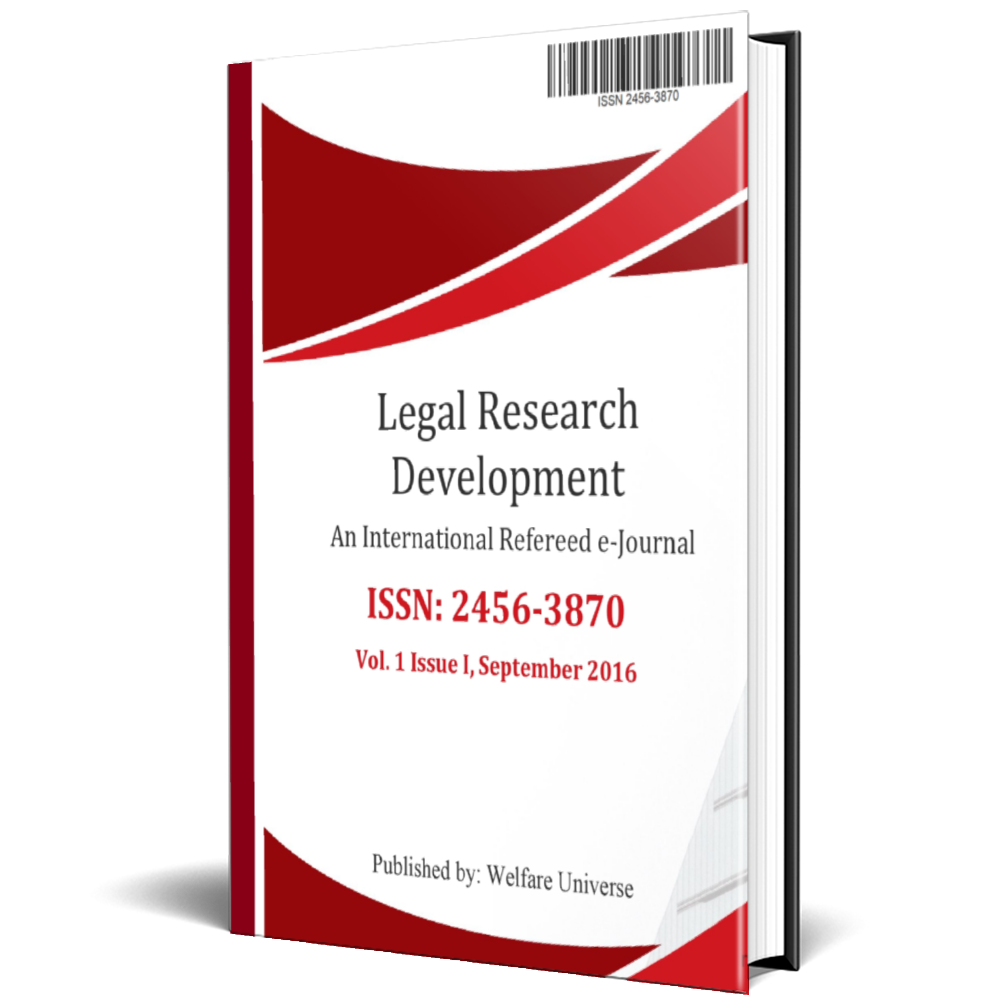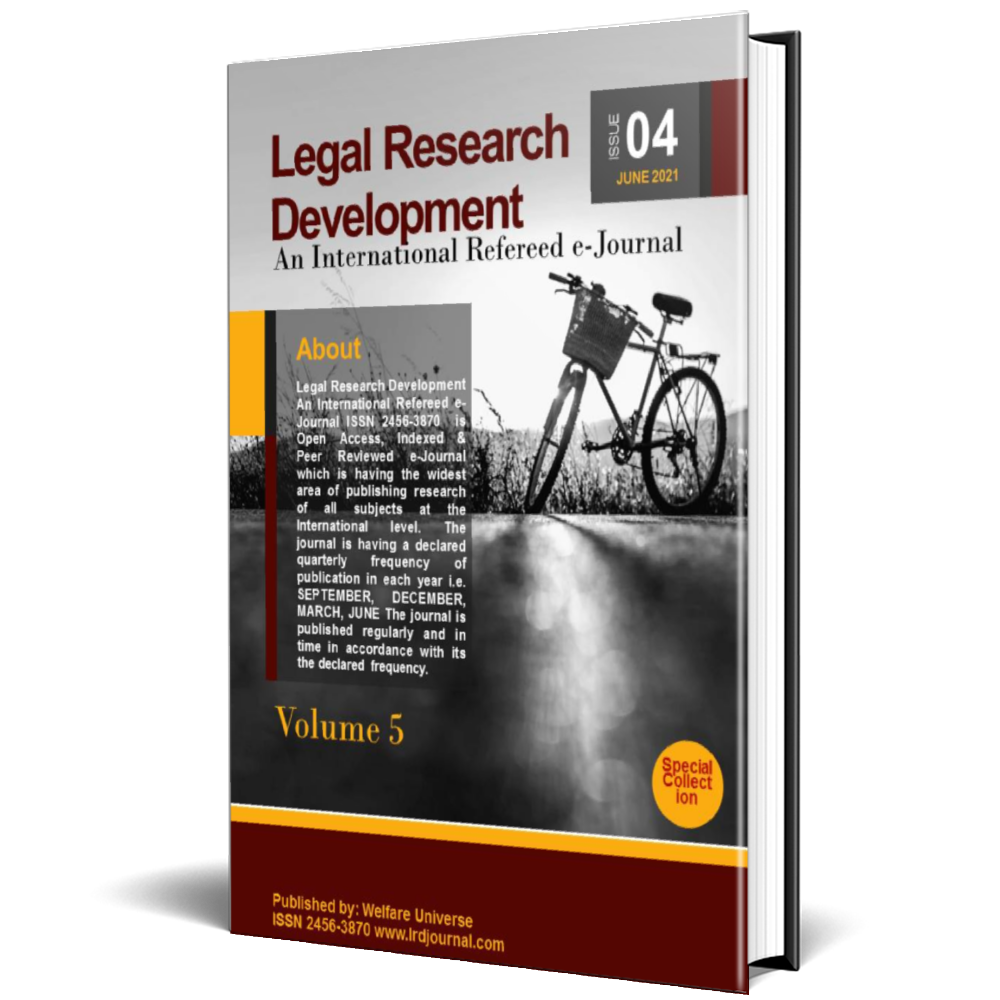Inchoate Crimes
DOI:
https://doi.org/10.53724/lrd/v1n1.08Keywords:
Indirectly participate in a criminal offense, Inchoate CrimesAbstract
The Indian Penal Code punishes a person for criminal intimidation that “The thought of a man is not triable for the devil himself not the thought of a man.” But when this intent is expressed in words and can be inferred from his conduct, the person can be held criminally liable. It means the law only takes notice of an intention followed by some overt act.
3, which is a mere expression of one’s intention to inflict punishment, loss or pain to another. Sometimes it amount to completed offence.4
The third stage is the ‘stage of attempt.’ An attempt is an overt act towards the commission of an offence after the preparation is made. For example, if a man after having procured a loaded gun pursues his enemy, but fails to overtake him or is arrested before he is able to complete the offence or fires without effect; in all these cases the man is liable for an attempt to murder. But in another situation, if a person purchases and loads a gun with the evident intention of shooting his enemy, but makes no movement to use the weapon After the stage of contemplation the next stage is known as ‘the stage of preparation.’ It consists devising or arranging the means or measures necessary for the commission of the crime. Generally the preparation to commit an offence is not punishable. The one reason behind it is the difficulty in proving it and the other is to protect the suspected person from unnecessary harassment. But there are some exceptions to this general rule. In these exceptional cases the mere preparation to commit the offences are punished because they preclude the possibility of an innocent intention.
References
In re Scofield (1784) Cald.402.
Y.B. (1477) p.17.
Section 503 of I.P.C., 1860.
Section 124 A of I.P.C.,1860.
Kenny (17th Ed), Edited by J.W.C.Turner,p.87
Section 122 of the I.P.C.,1860.
Section 126 of the I.P.C.,1860.
Section 399 of the I.P.C.,1860
Sections 233, 234, 235, 256,& 257 of the I.P.C.,1860.
Sections 242, 243, 259 and 266 of the I.P.C.,1860.
Stephen, Digest of Criminal Law (8th Ed.), Art. 29 p.26
In Eagleton (1855) Dearsly 515
(1915) 11 Cr.App. R. 124
(1953) 37 Cr. App. R.214
Wharton, Criminal Law, Vol.1p.173
Bishop, New Criminal Law,Vol.1,Sec. 728
Sections 121, 124, 124A, 125, 130, 131, 152, 153A, 161, 162, 163, 165, 196, 198, 200, 213, 239, 240, 241, 251, 385,
, 389, 391, 397, 398 and 460.
Section 307 of the I.P.C., 1860
Section 308 of the I.P.C.,1860
Section 309 of the I.P.C.,1860
Section 393 of the I.P.C.,1860
Huda, p.50
Gaur,K.D. The Penal Law of India, vol.II(4th Ed.) p.2804
R. v. Cheesman (1862) 1 I&C,140.
McPherson’s case; D&B, 202
Vol.X(3rd Ed.),1955,p.307.
Kenny, Outlines of Criminal Law,(17th Ed.) p.92
Burdick, The Criminal Law, vol.1,p.181
R. v. White (1910) 2 K.B. 124
9 Cox C.C. 407
D. and B. 197
24,Q.B.D.,537
(1892) 17 Cox C.C.491
R. v. White,(1910) 2K.B.124(CC.A.)
R. v. Taylor (1875) L.R.2.C.C.R.147
Queen v. Mohit 3N.W.P.31637 R. v. Sorsky (1944),2All.E.R.333;336
R. v. Sorsky (1944),2All.E.R.333;336
B.N.Mukerjee v. Emp.AIR 1945Nag.163;166.
1868,L.R.3 H.L.306;317.
Downloads
Published
How to Cite
Issue
Section
License

This work is licensed under a Creative Commons Attribution-NonCommercial 4.0 International License.










